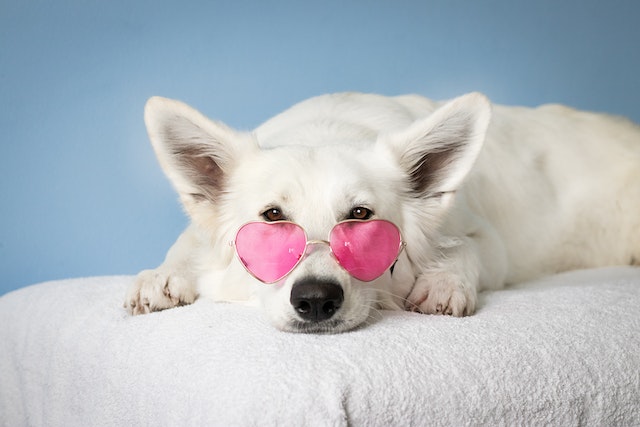Bringing a dog home can be a real milestone in the life of your family unit, as a furry friend like this can complete your household and also give you endless joy for years to come. However, it’s of course worthwhile to make sure the dog is suitable for our environment, and that we’re equipped to keep them.
Sometimes, a particular dog may seem like a great fit, but you might not be the best owner. Huskies tend to be a lovely pet for those who know what they’re doing with them, but they’re working dogs that require a great deal of exercise each week, often howl wildly and loudly and so must undergo steadfast training, and are generally filled with energy. In other words, they can be a little much for parents with children and careers.
In this post, then, we’ll discuss how to make a more suitable choice of dog going forward. With the following advice, you’ll be sure to get there:
Size
Just from a pure animal management perspective, size matters. After all, if you have small children in your household, then even the most well-meaning but very large dog can cause harm if they get excited. Moreover, toy dogs can be pleasant, but you may need to be careful with their little legs and joints.
It’s often considered worthwhile to buy a small dog as your first pet, especially if you have a family. Cavalier King Charles Spaniels are a great choice, for instance, while mid-sized dogs such as chocolate labradors can also be a wonderful option. For that, you can find more here.
If you have mobility issues, or if you’re small yourself, having a dog you can easily control on a leash is a good idea. Large dogs can be suitable, but remember that they may need to be exercised more, and will need to be trained more thoroughly to ensure good behavior at all times.
Energy & Training Needed
Different dogs have different energy levels, and depending on the breed you bring home, this can be a good or bad thing. For example, greyhounds are considered nice pets to have in the home, but they can run incredibly fast (they’re racing dogs, after all), and can be impossible to catch up to if they decide to run off.
Moreover, it’s important to select a dog that can be easily trained. Retrievers, labradors and other working dogs tend to be a good fit for this. While many breeds can be trained, some do more than others. On top of that, selecting a dog
Intelligence & TEMPERAMENT
All dogs have their virtues, but of course, some are considered a little more intelligent than others. For example, Border Collies are considered some of the most trainable dogs out there, which is why they’re used for sheep and cattle herding, and some agility competitions.
Small poodles can also be trained in this way. German Sheperds and Golden Retrievers are known as working dogs too, the former used in many military and law enforcement applications, while the latter have been used as hunting retrievers in the past, hence the name. It’s good to find a dog that can react to your commands, can be trained, and knows how to act around people or small children.
However, it doesn’t matter if your dog is a little silly and ridiculous, provided their temperament is friendly and kind. For example, some dogs such as golden retrievers are known for being exceedingly happy and good-natured, and as such, make wonderful family dogs. Labradors are known for being highly excitable, but tend to work very well with children too.
Grooming Requirements & Shedding
Of course, you’ll need to groom your dog no matter what breed you bring home, and they all tend to shed their fur as part of usual seasonal cycles. However, some can shed more than others. For instance, Saint Bernards, Golden Retrievers, Huskies and Labradors tend to shed quite often.
This might mean you’ll need to vacuum more than usual, especially during warmer months, and you may need to take them to the groomer to avoid hair tags and skin conditions. This is unlikely to be a deal-breaker in your willingness to bring a dog home, but it’s important to know so you understand how to prepare.
Of course, some dogs will need to be groomed more than others. For example, poodles require continual brushing to stop their coasts from matting, as do Old English Sheepdogs. It’s good to know this before going in, because grooming costs money and time, and so budgeting that as part of your expense is essential.
Environment & Lifestyle
Is your dog breed suited to your particular lifestyle? For example, some dogs are quite small and happy to live in a relatively mid-sized apartment provided they can go on regular walks, but some large dogs may need space, and ideally a garden for a happy life.
Is your lifestyle conducive to their well-being also? If you and a partner spend ten hours at work each day, it can be cruel to leave them at home. If you have a family with people coming and going throughout the day, then a smaller toy dog or dog you can let accompany you from hobby to hobby will make a big difference.
Specific Medical Needs
All dogs need vaccinations and veterinarian care from time to time, that much is expected. But it’s also important to keep in mind the needs of some breeds. Flat-nosed dogs can sometimes find it hard to breathe, which in turn may cause them to panic or choke if they’re not cared for.
Other dogs may have issues like hip dysplasia or spinal cord problems, or even allergies. For example, German Sherperds are known to suffer from these. Understanding this, and doing your research ahead of time, knows what you’re getting into with each breed, and that helps you prepare. Sure, you might not select a dog based on the medical issues they have, but it’s always good to see if you’re prepared to deal with that ahead of time as a caring and ethical owner.
With this advice, you’re sure to select the perfect breed for your first dog.







